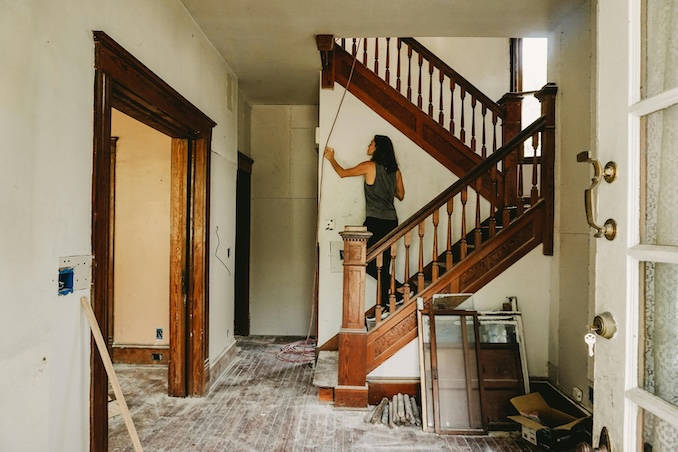Property damage can upend life in an instant. Whether caused by a flood, fire, storm, or mold infestation, the aftermath requires quick but informed decisions. One of the most common dilemmas property owners face is whether to restore what’s been damaged or replace it entirely. While restoration is often more cost-effective, replacement can offer long-term benefits. Striking the right balance between these two options depends on several emotional, financial, or structural factors.

In this guide, we’ll break down how to make the best decision for your situation and how working with a reliable Vancouver restoration company can make the process smoother and more effective.
Assessing the Damage: The First Critical Step
Before making any decisions, the first task is a thorough damage assessment. This means going beyond the visible destruction to understand what’s lurking behind walls, beneath floors, or inside insulation. Hidden water damage, smoke particles in ventilation systems, and mold colonies developing out of sight can all influence whether repair or replacement makes more sense.
Consulting professionals for an in-depth inspection ensures you understand not only the extent but also the implications of the damage. For example, a room that appears mildly affected by smoke could actually be filled with toxic residue that requires specialised treatment. Similarly, water that has seeped into drywall may lead to mold growth weeks later if not properly handled.
Weighing the Case for Restoration
Restoration involves repairing, cleaning, and salvaging what’s already there. It’s usually less invasive and often quicker. For property owners hoping to minimise disruption, restoration can be the ideal path, especially when structural integrity is intact.
The main appeal lies in its efficiency. If flooring, cabinetry, or drywall can be dried, cleaned, and repainted, you may be able to avoid a costly overhaul. Restoration also preserves original features, which is particularly valuable in older homes with architectural character or sentimental elements.
However, restoration isn’t always a guaranteed fix. There’s a risk that certain materials, once damaged, won’t perform the same way again. Wood that has swelled from water might dry unevenly and weaken over time. Smoke can linger in porous materials, leaving behind persistent odors despite surface cleaning.
So while restoration can be the economical and faster option, it’s only wise if the materials and structures involved are truly salvageable.
When Replacement Is the Smarter Option
Sometimes, starting fresh is the better move. Replacement becomes necessary when the damage has undermined the safety, function, or long-term viability of key parts of a structure. This might include a roof weakened by fire, flooring warped beyond repair by water, or mold-infested drywall that poses health risks.
Replacement gives you the opportunity to upgrade, whether it’s improving insulation, choosing more durable finishes, or incorporating modern design elements. There’s peace of mind in knowing the problem has been fully removed and resolved rather than just patched over.
However, replacement typically comes with higher costs, longer timelines, and potentially more disruption. It may also involve permits, inspections, and coordinating multiple contractors. But for major damage or outdated infrastructure, it’s often the investment that pays off in longevity and safety.
The Role of Insurance in Your Decision
Insurance coverage can significantly impact your choice. Some policies favour restoration over replacement due to cost, while others may cover replacement if it’s deemed necessary by an adjuster. Knowing the specifics of your policy is key.
Documentation is critical. Photos, professional assessments, and detailed estimates will support your case whether you opt for repair or rebuild. Always check whether your policy includes full replacement value or only covers depreciated costs, as this can affect how much of the project you’ll need to finance out-of-pocket.
Emotional and Practical Factors
Beyond dollars and logistics, personal priorities also matter. If the property is a family home filled with memories, you may be inclined to restore and retain as much of the original structure as possible. On the other hand, if you’ve been planning a remodel, this could be the right moment to pivot to replacement and reimagine the space.
Consider your timeline and lifestyle. Can you afford to be out of the house for weeks or months? Will restoration allow you to continue living on-site with minimal interruption? These questions are just as important as cost when determining the best course of action.
Restoration vs. Replacement: A Realistic Framework
In practical terms, restoration is suitable when damage is isolated, costs are constrained, and the materials affected are salvageable. For example, smoke residue on walls and ceilings may be removable with deep cleaning and repainting. Minor water intrusion might be handled with drying and dehumidification, especially if caught early.
Replacement, however, is often unavoidable when the core structure is compromised or when the risk of recurring problems is high. Mold, especially black mold, is one such example. Removing and replacing all contaminated materials is usually the safest route. The same goes for electrical systems or HVAC components that have been exposed to water.
The decision is rarely black and white. Most situations fall somewhere in the middle, involving a blend of restoration and replacement depending on each component’s condition.
How to Make an Informed Choice
Ultimately, the smartest approach is guided by data, expert input, and a clear understanding of your priorities. Work with professionals who aren’t pushing for one option over another, but instead help you weigh costs, benefits, and future risks. Ask for detailed breakdowns and compare them side by side.
Avoid rushing the decision. Take time to understand the full scope of work involved, and make sure it aligns with your long-term goals for the property. Whether your aim is to preserve, upgrade, or simply restore functionality, the decision should reflect both logic and peace of mind.
If you’re facing this decision now, consulting a seasoned restoration team can help clarify your next steps. Specialists will not only assess the damage but also provide practical advice grounded in years of experience across similar cases.
In that process, Double Clean Restoration stands out for its commitment to integrity and comprehensive service. Knowing that you have trustworthy guidance can make a difficult situation far more manageable.

